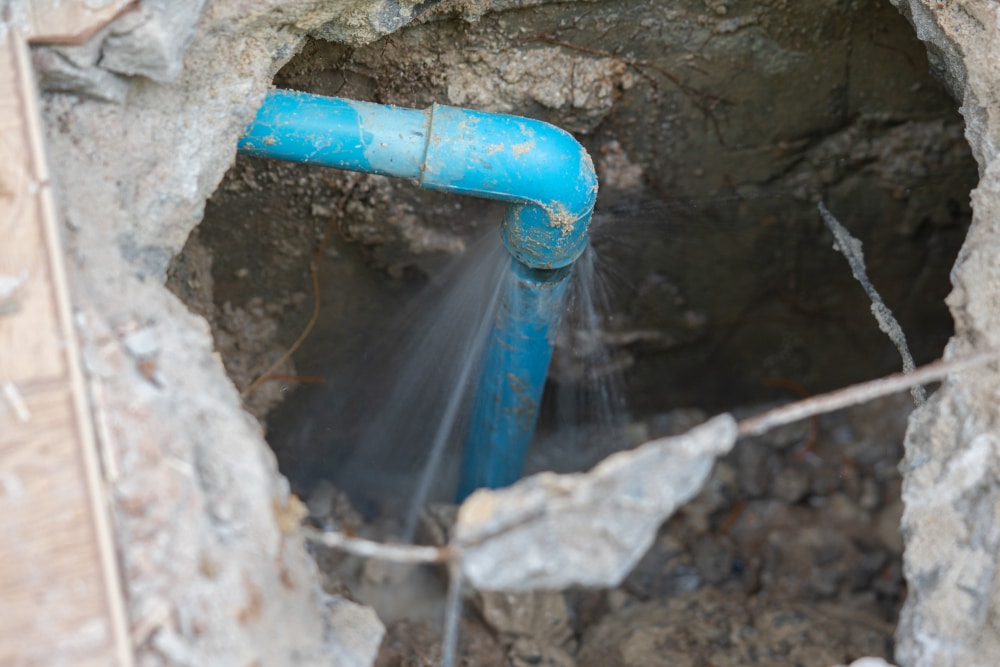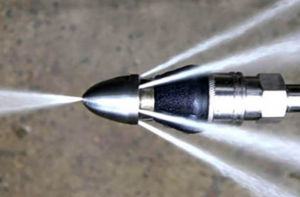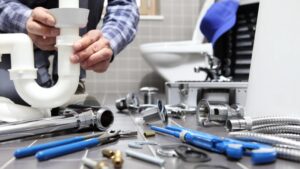Water lines are essential for a functioning home, supplying clean water for drinking, cooking, and washing. But when something goes wrong with your water line, it can lead to a variety of problems, from minor annoyances like reduced water pressure to major issues like flooding or water damage. Understanding the common symptoms of water line issues can help you catch problems early and make informed decisions about whether to repair or replace your plumbing.
This guide will help you understand the common symptoms of water line problems, how to determine if a simple repair is sufficient, and when it’s time to consider a full replacement. Taking the right steps can keep your plumbing in tip-top shape and give you peace of mind.
Common Symptoms of Water Line Issues
Spotting water line issues early can save you from larger problems down the road. Here are some common symptoms to watch for:
1. Low Water Pressure: If you notice a sudden drop in water pressure when using faucets or showers, it could mean there’s a leak or blockage in your water line. Low water pressure is often one of the first signs of an issue.
2. Unusual Sounds: Hearing hissing, gurgling, or banging noises in your pipes? These sounds can indicate air in the lines or water trying to navigate through a blockage, both of which signal potential issues.
3. Water Discoloration: If your water appears rusty or has a strange color, it may indicate that your pipes are corroding. Sediment and rust can enter the water supply, changing its color and often leaving a metallic taste.
4. Wet Spots or Puddles: Unexplained wet spots in your yard or home might mean a leak in your water line. Look for areas that are wetter than usual or have puddles even when it hasn’t rained.
5. High Water Bills: A sudden increase in your water bill without an increase in usage could point to an underlying water line issue. Leaks can waste a lot of water, leading to higher costs.
Recognizing these symptoms early can help you address issues quickly and avoid more extensive damage.
How to Determine if a Repair is Sufficient
Deciding whether a water line issue requires a repair or total replacement can be tricky. Here are some factors to help you determine if a repair will be enough:
1. Extent of the Damage: Small, localized leaks or clogs can usually be fixed with a simple repair. If the damage is confined to one section of the pipe, a patch or pipe sleeve might solve the problem effectively.
2. Type and Age of the Pipes: If you have newer pipes made from durable materials, repairs are often sufficient. However, older pipes made from outdated materials like galvanized steel might be better off being replaced. Older pipes are more prone to future issues, even after a repair.
3. Cost Considerations: Sometimes, the cost of multiple small repairs can add up and approach the cost of a full replacement. If you’re faced with frequent repairs, a replacement might be more economical in the long run.
4. Longevity and Effectiveness: Repairs might fix the immediate issue but can sometimes be a temporary solution. If a repair won’t provide a long-lasting fix, a replacement might be the better option to ensure your water line remains problem-free.
5. Professional Assessment: It’s always a good idea to get a professional opinion. Plumbers can use tools like sewer cameras to inspect the line and give you an accurate idea of the extent of the damage.
Using these factors, you can make an informed decision on whether to go with a repair or opt for a complete replacement. This helps you manage your water line issues effectively and economically.
When Replacement Becomes Necessary
Sometimes, repairing your water line isn’t enough, and a full replacement is required. Here’s when you should consider going for a complete water line replacement:
1. Frequent Repairs: If your water line has needed multiple repairs within a short period, it’s probably more cost-effective to replace it. Constant issues often mean the pipe is deteriorating and will continue to fail.
2. Old Pipes: If your home has old pipes made from materials like galvanized steel or lead, replacement is often the best option. These materials are prone to corrosion and pose health risks. Updating to modern materials like PVC or copper can provide long-term reliability and safety.
3. Failed Pressure Tests: A professional plumber can perform pressure tests to check the integrity of your water line. If the line fails these tests, it indicates significant damage that likely requires replacement.
4. Visible Corrosion or Cracks: If you can visibly see rust, corrosion, or cracks in your water line, it’s a strong signal that a replacement is necessary. Surface damage often means there could be more extensive problems that aren’t immediately visible.
5. Poor Water Quality: Persistent issues with water quality, such as cloudiness or an odd taste, can suggest severe problems within the pipes. Replacing the water line can resolve these issues and ensure a safe, clean water supply.
These signs indicate that replacing your water line is the smarter, long-term solution. It’s better to tackle these issues head-on rather than deal with frequent and costly repairs.
Steps to Take Before and During Water Line Repairs
Preparing for water line repairs ensures the process goes smoothly and efficiently. Here are the key steps to follow before and during the repair process:
1. Shut Off the Water Supply: Before any repair work begins, make sure to turn off the water supply to prevent any further damage or water waste. Locate the main shut-off valve and turn it off.
2. Clear the Area: Remove any obstacles around the repair site, both indoors and outdoors. This makes it easier for the plumber to access the damaged area and carry out the repair efficiently.
3. Communicate with Your Plumber: Clearly explain the issues you’ve noticed to your plumber. Providing detailed information helps them accurately diagnose the problem and decide the best course of action.
4. Inspect for Additional Issues: During the repair, have your plumber inspect the entire water line for any additional problems. It’s best to address all issues at once rather than having to call for multiple visits.
5. Test the Repairs: After the repairs are done, turn the water back on and test all affected fixtures to ensure the problem is fixed. Check for any signs of leaks or other issues that may need further attention.
6. Clean Up: Once the repair is complete, make sure to clean up the area. This includes disposing of any old pipe materials and ensuring no tools or debris are left behind.
Following these steps can make water line repairs less stressful and more effective. It also guarantees that your plumbing system is back up and running as it should be.
Conclusion
Dealing with water line issues can be daunting, but recognizing the symptoms early and understanding when to repair or replace can make a big difference. Knowing the common signs of water line problems helps you act quickly and avoid extensive damage. Deciding whether a repair is sufficient or a full replacement is necessary depends on various factors like the extent of the damage, the age of the pipes, and how often repairs are needed.
If you’re facing water line issues and aren’t sure whether to repair or replace them, look no further than New Pro Plumbing. Our expert team of plumbers in Los Angeles will provide a thorough inspection and professional advice to help you make the best decision for your home. Don’t delay—reach out to us today to keep your water running smoothly!

















